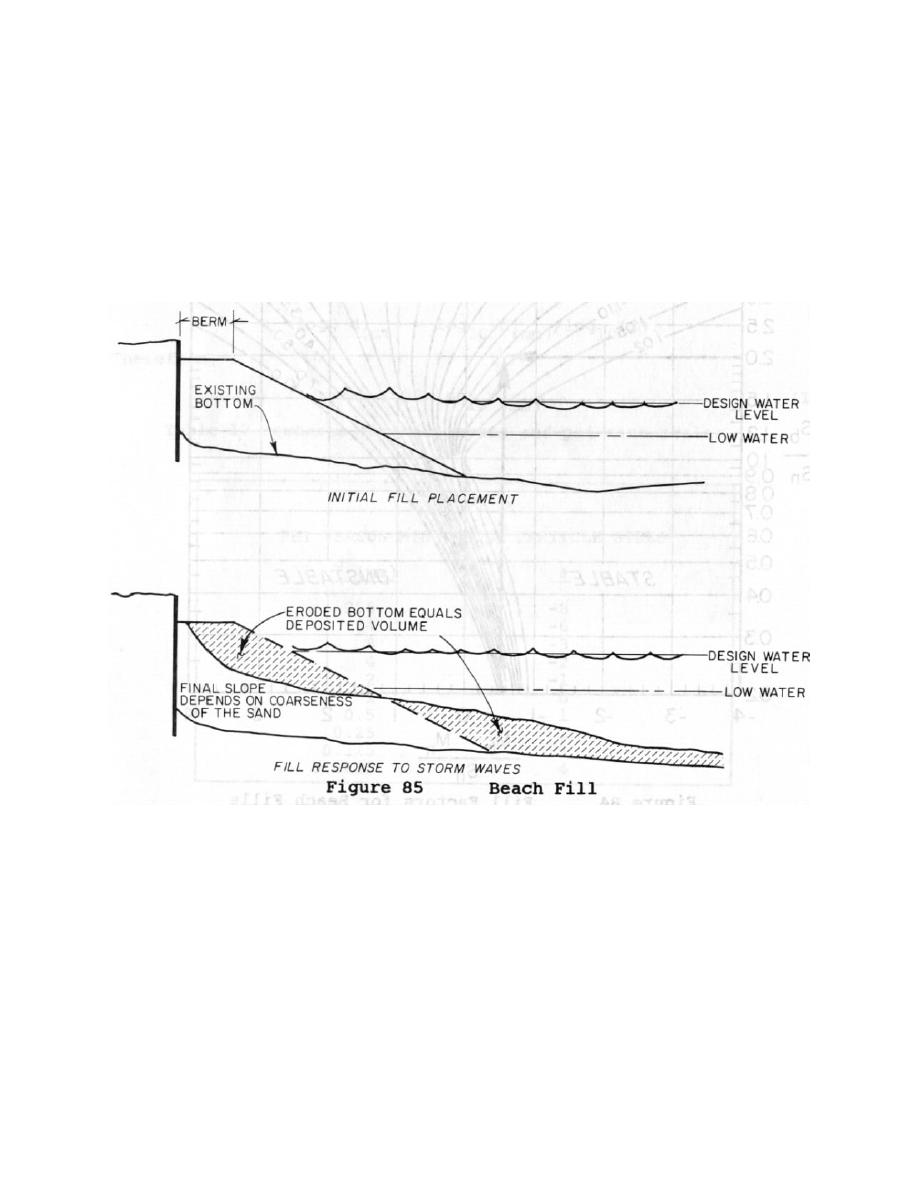
new beach will eventually assume a similar shape. The shaping of the beach fill profile can either be
done by equipment at the time it is placed, or it can be reshaped by waves. The final equilibrium slope
will depend on the texture of the fill material, coarser-grained sand resulting in a steeper beach slope than
previously existed.
If fill is placed over a short length of shoreline, it will create a projection that will be subject to
increased wave attack. Therefore, it is generally preferable to make the transition to the existing
shoreline over a longer distance. This may require a cooperative effort involving a number of
landowners. If this is impractical, protective structures such as groins may be required to retain the fill.
VEGETATION
Vegetation has been used for stabilizing shorelines either as a substitute for, or supplement to,
structures. Vegetation is an inexpensive, and generally easy, approach to providing erosion control.
It is not, however, applicable to all situations. It cannot always prevent erosion, nor can it stop the
recession of bluffs caused by groundwater seepage. In order to confront these types of problems, it is
necessary to consider a combination solution such as a structural device and vegetation.
Vegetation uses are limited by site characteristics such as climate, soil properties, wave exposure,
and salinity regimes. The following discussion will focus on species which may be used for marsh,
beach, dune and slope plantings. For each species, the applicable geographical region and planting
specifications will be described. Further information on these and other species not mentioned in this
117



 Previous Page
Previous Page
